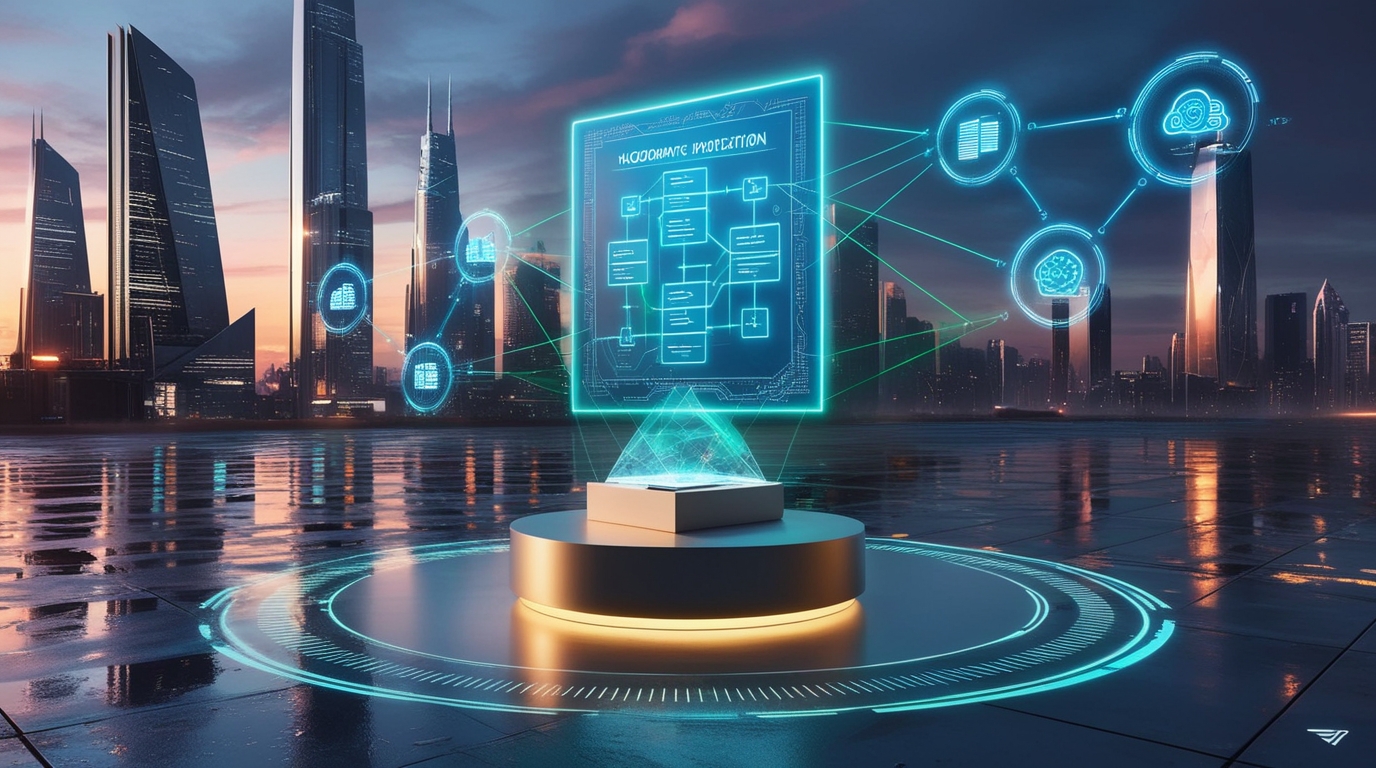The role of Information Technology (IT) has become more critical than ever. Traditionally, IT has been viewed as a cost center—a necessary but often burdensome expense required to keep the organization running. However, this perspective is rapidly changing. Forward-thinking companies are beginning to recognize the potential of IT to act as a profit center, driving value, innovation, and competitive advantage. This article explores the paradigm shift from viewing IT as a cost center to recognizing it as a profit center, delving into the implications, benefits, and strategies for running IT like a business.
Understanding the Traditional Perspective: IT as a Cost Center
For many years, IT departments have been considered cost centers. This perspective stems from the view that IT primarily provides support services that enable the core business functions to operate. In this traditional model, IT expenses are considered necessary overheads, focused on maintaining infrastructure, ensuring security, and supporting daily operations. The primary metrics for evaluating IT performance in this context are cost efficiency and operational stability.
Key Characteristics of IT as a Cost Center:
- Budget-Driven Decisions: IT departments are often allocated a fixed budget, emphasizing cost control and reduction.
- Reactive Approach: The focus is on responding to issues and maintaining existing systems rather than proactively seeking opportunities for improvement.
- Operational Focus: IT is primarily concerned with running systems smoothly, ensuring uptime, and supporting end-users.
- Limited Innovation: Investment in new technologies or innovative projects is often minimal due to budget constraints and risk aversion.
While this approach has been effective in maintaining operational stability, it significantly limits IT’s potential to contribute to broader business goals and drive innovation.
The Paradigm Shift: IT as a Profit Center
The shift from viewing IT as a cost center to recognizing it as a profit center involves a fundamental change in mindset. This new perspective sees IT as a strategic asset that can drive revenue, enhance customer experiences, and create new business opportunities. By leveraging technology, organizations can transform their IT departments into engines of growth and innovation.
Key Characteristics of IT as a Profit Center:
- Revenue-Driven Decisions: IT investments are evaluated based on their potential to generate revenue and create business value.
- Proactive Approach: IT departments actively seek opportunities to leverage technology for competitive advantage and business growth.
- Strategic Focus: IT is aligned with the organization’s strategic goals, contributing to business development, customer satisfaction, and market differentiation.
- Innovation and Experimentation: There is a strong emphasis on innovation, and there is a willingness to invest in new technologies and experimental projects.
Benefits of Transforming IT into a Profit Center
The benefits of viewing and managing IT as a profit center are significant and multifaceted. Here are some of the key advantages:
- Enhanced Business Alignment: When IT is seen as a profit center, it aligns more closely with the organization’s strategic goals. This alignment ensures that IT initiatives directly support business objectives, leading to more cohesive and effective strategies.
- Increased Revenue Opportunities: IT departments can identify and capitalize on new business opportunities by focusing on revenue-generating projects. This includes developing new products and services, improving customer experiences, and expanding into new markets.
- Improved Innovation and Agility: A profit-centered approach encourages innovation and experimentation. IT departments are more likely to invest in emerging technologies, adopt agile methodologies, and explore creative solutions to business challenges.
- Better Resource Utilization: Viewing IT as a profit center promotes a more strategic allocation of resources. Investments are directed toward initiatives with the highest potential for business impact, leading to more efficient use of funds and personnel.
- Stronger Competitive Advantage: Organizations that leverage IT as a profit center can differentiate themselves in the marketplace. By using technology to create unique value propositions and improve operational efficiency, they can gain a significant competitive edge.
Strategies for Transforming IT into a Profit Center
Transforming IT from a cost center to a profit center requires a deliberate and strategic approach. Here are some key strategies to facilitate this transformation:
- Align IT with Business Objectives:
- Strategic Planning: Ensure IT strategy is integrated with the overall business strategy. This involves close collaboration between IT and business leaders to identify areas where technology can drive value.
- Performance Metrics: Develop metrics that align IT performance with business outcomes. This includes tracking revenue generated from IT initiatives, customer satisfaction scores, and the impact of IT projects on business growth.
- Foster a Culture of Innovation:
- Encourage Experimentation: Create an environment where innovation is encouraged and failure is seen as a learning opportunity. This can be achieved through innovation labs, hackathons, and pilot projects.
- Invest in Emerging Technologies: Allocate budget for research and development of new technologies. This includes exploring artificial intelligence, machine learning, blockchain, and other cutting-edge solutions.
- Enhance Customer Focus:
- Customer-Centric IT: Shift the focus of IT projects from internal efficiency to customer experience. This involves using technology to enhance customer interactions, personalize services, and improve satisfaction.
- Feedback Mechanisms: Implement systems to gather and analyze customer feedback. Use this data to inform IT initiatives and ensure they meet customer needs and expectations.
- Develop IT as a Revenue Generator:
- New Products and Services: Leverage IT to develop new revenue streams. This could involve creating digital products, offering technology consulting services, or developing software solutions for external clients.
- Partnerships and Collaborations: Form strategic partnerships with other organizations to co-develop innovative solutions. This can help expand market reach and create additional revenue opportunities.
- Adopt Agile and DevOps Practices:
- Agile Methodologies: Implement agile methodologies to increase IT responsiveness and flexibility. This involves iterative development, continuous feedback, and a focus on delivering value quickly.
- DevOps Integration: Integrate development and operations teams to streamline the deployment process. This reduces time-to-market for new solutions and enhances operational efficiency.
Case Studies: Successful Transformations
To illustrate the practical benefits of transforming IT into a profit center, let’s examine a few case studies of organizations that have successfully made this shift.
Case Study 1: Netflix Netflix is a prime example of a company that has leveraged IT as a profit center. Originally a DVD rental service, Netflix transformed its business model by embracing digital streaming technology. This shift reduced operational costs, opened new revenue streams, and expanded its global reach. Netflix’s investment in data analytics and recommendation algorithms further enhanced customer experience and loyalty, driving significant revenue growth.
Case Study 2: Capital One Capital One has successfully positioned its IT department as a profit center by focusing on digital transformation and customer-centric innovation. The company invested heavily in cloud computing, artificial intelligence, and machine learning to enhance its banking services. By developing innovative digital products and personalized customer experiences, Capital One has improved customer satisfaction and drive new revenue opportunities.
Case Study 3: General Electric (GE) GE transformed its IT operations by adopting a profit-centered approach, focusing on industrial internet technologies and data analytics. GE’s Predix platform, a cloud-based solution for industrial applications, enabled the company to offer new digital services and generate additional revenue. By leveraging IT to create innovative solutions for its customers, GE has positioned itself as a leader in the industrial Internet of Things (IIoT) market.
Overcoming Challenges in the Transformation Process
While the benefits of transforming IT into a profit center are clear, the process is not without challenges. Here are some common obstacles and strategies to overcome them:
- Resistance to Change:
- Stakeholder Buy-In: Secure support from key stakeholders by demonstrating the potential benefits of the transformation. Use data and case studies to build a compelling business case.
- Change Management: Implement a robust change management strategy to address resistance. This includes communication, training, and involving employees in the transformation process.
- Budget Constraints:
- Phased Approach: Start with smaller, high-impact projects to demonstrate value. Use the success of these initiatives to justify further investment.
- Cost-Benefit Analysis: Conduct thorough cost-benefit analyses to prioritize investments in projects with the highest potential for revenue generation and business impact.
- Skills and Talent Gaps:
- Upskilling and Training: Invest in training and development programs to equip IT staff with the necessary skills for the new approach. This includes technical skills as well as business acumen.
- Hiring and Partnerships: Recruit talent with expertise in emerging technologies and business strategy. Consider forming partnerships with external experts and consultants to bridge skill gaps.
- Legacy Systems and Processes:
- Modernization Roadmap: Develop a clear roadmap for modernizing legacy systems and processes. This includes incremental upgrades, system integration, and adopting cloud-based solutions.
- Incremental Improvements: Focus on continuous improvement rather than attempting a complete overhaul. This allows for gradual transition and minimizes disruption to ongoing operations.
Conclusion
The transformation of IT from a cost center to a profit center represents a significant shift in how organizations view and manage their technology functions. By adopting a profit-centered approach, companies can unlock new value, drive innovation, and achieve competitive advantage. This shift requires a strategic alignment of IT with business objectives, a culture of innovation, a focus on customer experience, and the development of IT as a revenue generator. While the transformation process may present challenges, its potential benefits make it worthwhile for forward-thinking organizations. As illustrated by the success stories of companies like Netflix, Capital One, and General Electric, the journey to a profit-centered IT function can lead to substantial business growth and success.
For an excellent discussion on converting IT from a cost center to a profit or value center, please follow: Seven (7) Steps to Running IT as a Value Center. CIOs can use these steps to create a bigger bang for their IT buck. Hope you find it helpful in your journey!








